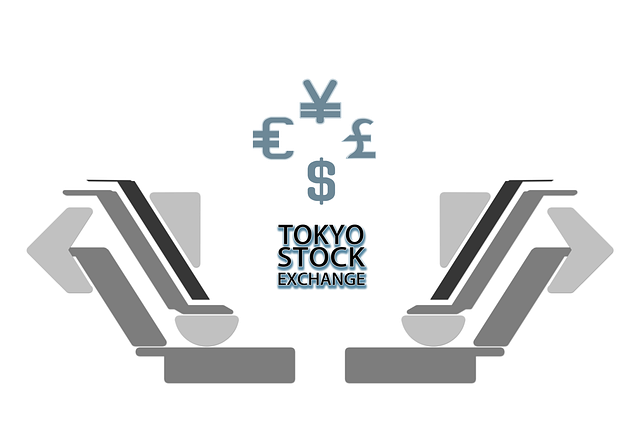
Ethereum, a leading blockchain platform, employs deflationary mechanisms, primarily through burning transaction fees, to reduce its native cryptocurrency, Ether (ETH), supply and drive up token value over time. This creates a favorable environment for long-term investors who benefit from the decreased total supply akin to traditional scarce assets. However, such mechanics also introduce volatility and risks due to potential demand fluctuations and ecosystem developments. Investors can strategically navigate this landscape by holding during volatility, diversifying investments, supporting dApps, adopting new consensus mechanisms like proof-of-stake (PoS), and engaging in DeFi liquidity provision. Staying informed about Ethereum's evolution is crucial for identifying promising projects and achieving substantial returns while contributing to its growth.
Ethereum, a leading blockchain platform, introduces deflationary mechanics through token burning and limited supply, impacting investors and holders economically. This article delves into the mechanisms behind Ethereum’s deflationary model, exploring its effects on token holders and the broader ecosystem. We analyze the economic advantages and risks for investors, offering strategies to navigate this unique environment. Understanding these dynamics is crucial for folks looking to make informed decisions in the world of Ethereum.
- Understanding Deflationary Mechanics on Ethereum
- How Deflation Impacts Token Holders
- Economic Benefits and Risks for Ethereum Investors
- Strategies for Navigating a Deflationary Environment on Ethereum
Understanding Deflationary Mechanics on Ethereum

Ethereum, as a leading blockchain platform, has introduced deflationary mechanics that significantly impact its economic landscape. At its core, deflation refers to a decrease in the general price level of goods and services over time, often driven by factors like reduced supply or increased demand. On Ethereum, this concept is manifested through various mechanisms designed to control the supply of its native cryptocurrency, Ether (ETH). One primary method is burning, where transactions incur fees that are destroyed, effectively reducing the total circulating supply.
This deflationary pressure can have profound effects on ETH holders. As the supply decreases and demand remains or increases, the value of each coin is likely to appreciate. Additionally, Ethereum’s smart contract functionality enables the creation of deflationary tokens that follow similar principles, further enriching its ecosystem. Understanding these mechanics is crucial for investors as it shapes the long-term viability and potential appreciation of their investments in the Ethereum network.
How Deflation Impacts Token Holders

Deflation on Ethereum directly affects token holders by potentially increasing the purchasing power of their holdings over time. When new tokens are burned or removed from circulation, the total supply decreases, which can lead to a rise in the value of each individual token. This dynamic is particularly significant for long-term holders who see their initial investment become a larger proportion of the overall network as deflation progresses.
For example, Ethereum’s burning mechanism during block rewards reduces the circulating supply, making it similar to traditional scarce assets like gold. As the supply decreases and demand remains constant or increases, token prices tend to rise. This benefit is especially pronounced for holders who have been consistent in their investment strategy, as they may reap the gains of a deflationary environment that values long-term commitment.
Economic Benefits and Risks for Ethereum Investors

Ethereum investors face a unique blend of economic benefits and risks due to deflationary mechanics. On one hand, the decreasing supply of Ether (ETH), driven by burning mechanisms and shrinking block rewards, can lead to increased scarcity and higher prices over time—a classic deflationary dynamic. This is particularly appealing for long-term holders who believe in Ethereum’s underlying technology and its potential for widespread adoption. The network’s expanding use cases, from decentralized finance (DeFi) to non-fungible tokens (NFTs), further bolster the case for ETH as a store of value.
However, there are risks associated with this deflationary trajectory. Volatile price movements, exacerbated by market speculation and geopolitical factors, can expose investors to significant losses. Additionally, if the Ethereum ecosystem fails to attract enough developers and users to sustain its growth, the reduced demand for ETH could negatively impact its value. Balancing these benefits and risks is crucial for Ethereum holders, who must stay informed about network developments, regulatory landscapes, and market trends to make informed decisions.
Strategies for Navigating a Deflationary Environment on Ethereum

In a deflationary environment on Ethereum, where token supply is decreasing or growing more slowly than demand, investors and holders can employ several strategies to navigate these economic shifts. First, holding onto your ETH or stablecoins during periods of volatility can be beneficial, as the reduced supply may drive up prices over time. Diversification is another key strategy; spreading investments across multiple assets can mitigate risk, especially when some projects may fare better in a deflationary context than others.
Additionally, keeping an eye on Ethereum’s evolving ecosystem and supporting decentralized applications (dApps) with strong use cases can be lucrative. As the network transitions to proof-of-stake (PoS), energy-efficient consensus mechanisms, and new token standards, early adoption of these innovations could offer significant returns. Engaging in staking and providing liquidity to DeFi protocols are also methods for holders to actively participate in the Ethereum economy while reaping the benefits of deflationary pressures.
The implementation of deflationary mechanics on Ethereum presents both opportunities and challenges for token holders. While deflation can lead to increased token value and potential economic benefits for investors, it also requires careful navigation through a shifting market landscape. By understanding the implications and adopting strategic approaches, Ethereum holders can mitigate risks and harness the advantages that deflationary mechanisms offer in this evolving digital economy. As with any investment, staying informed and adaptable is key to success in the ever-changing world of cryptocurrency.






